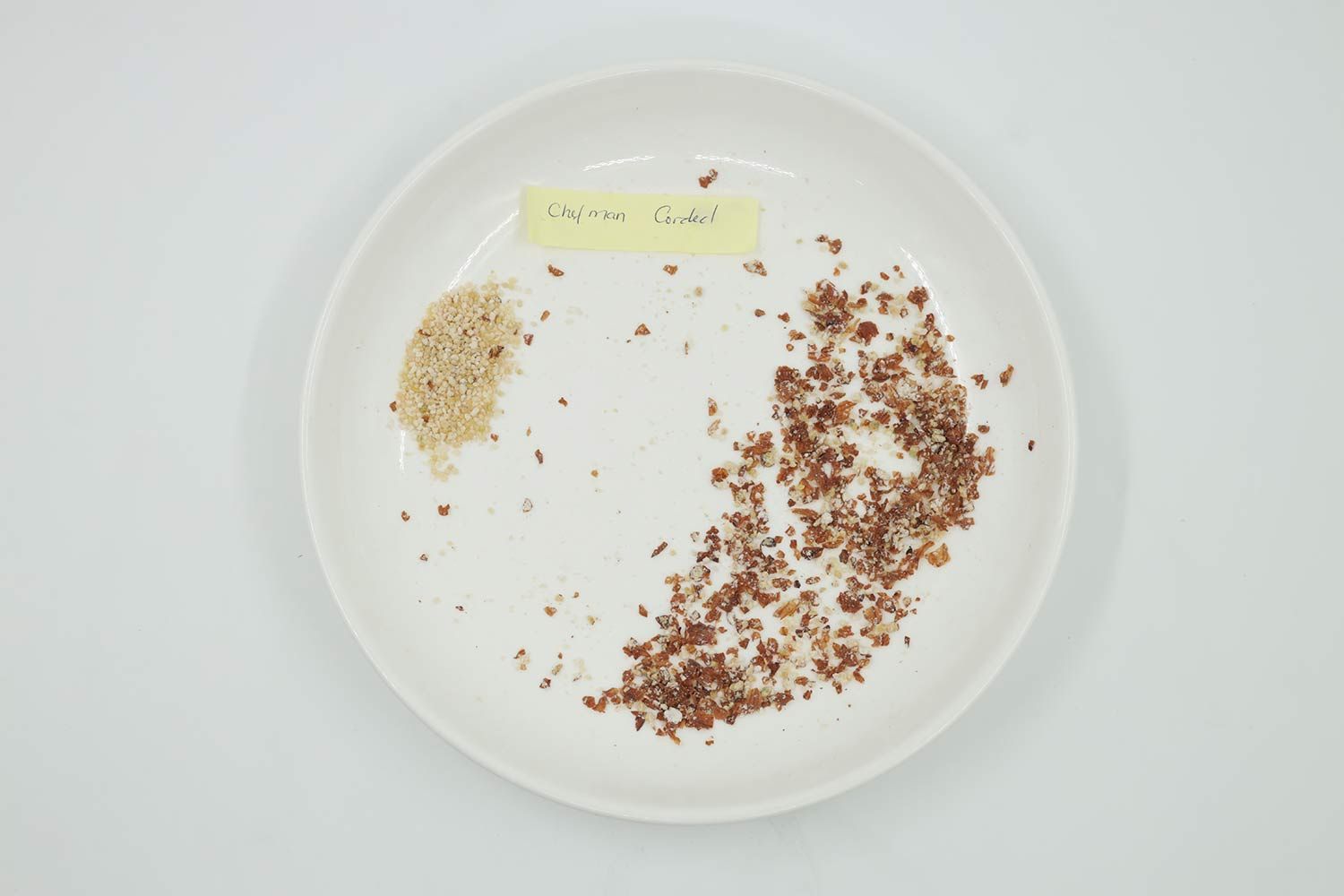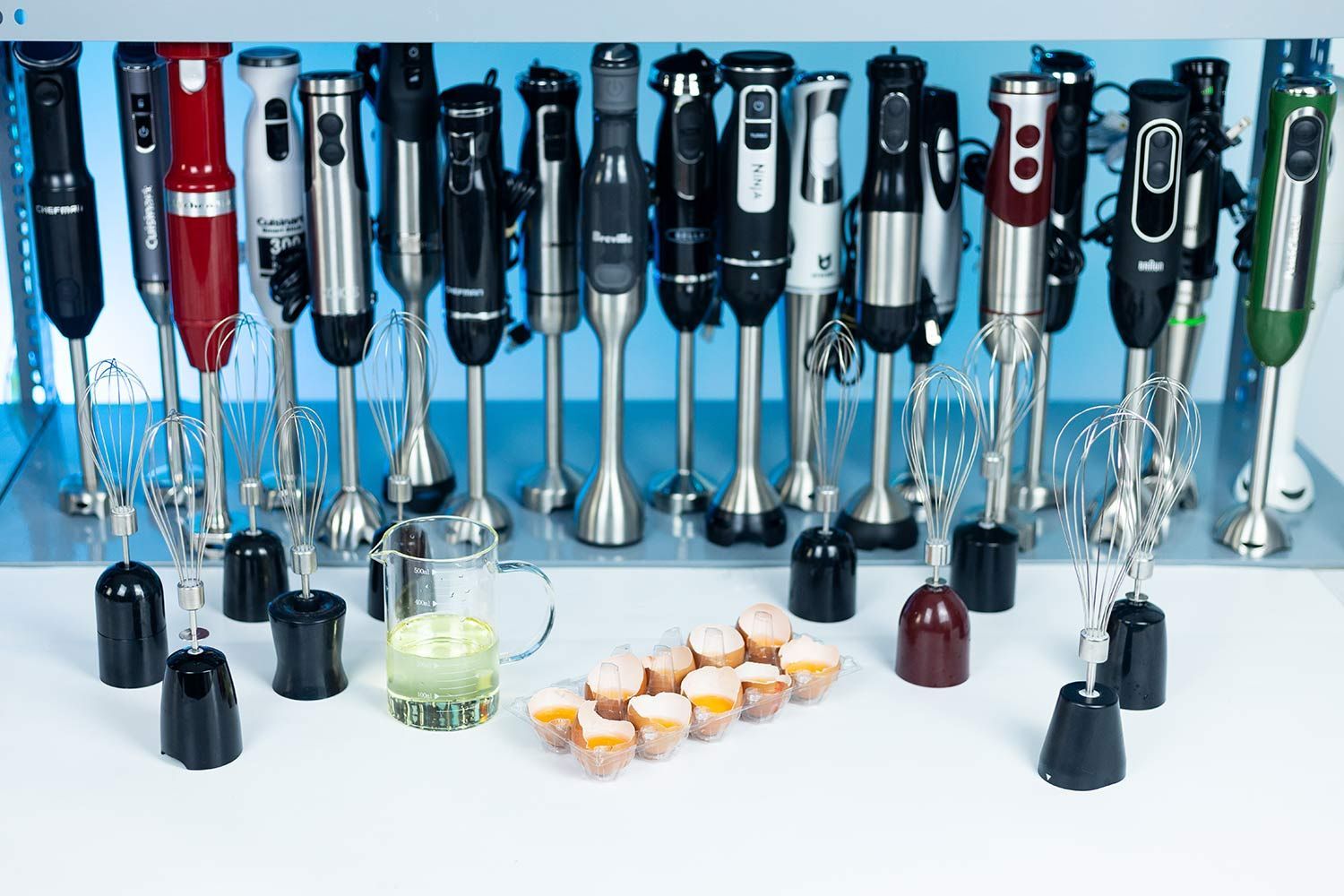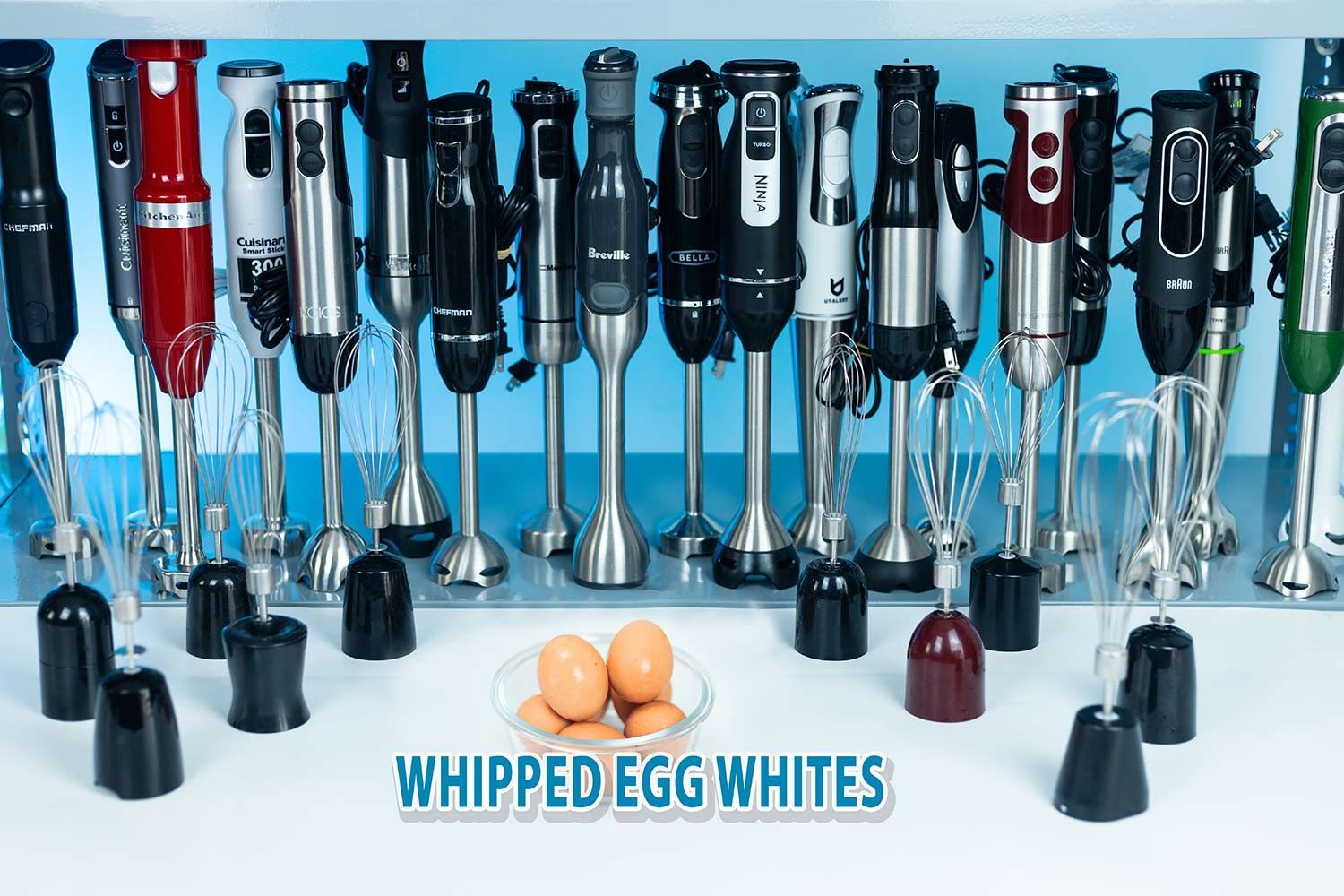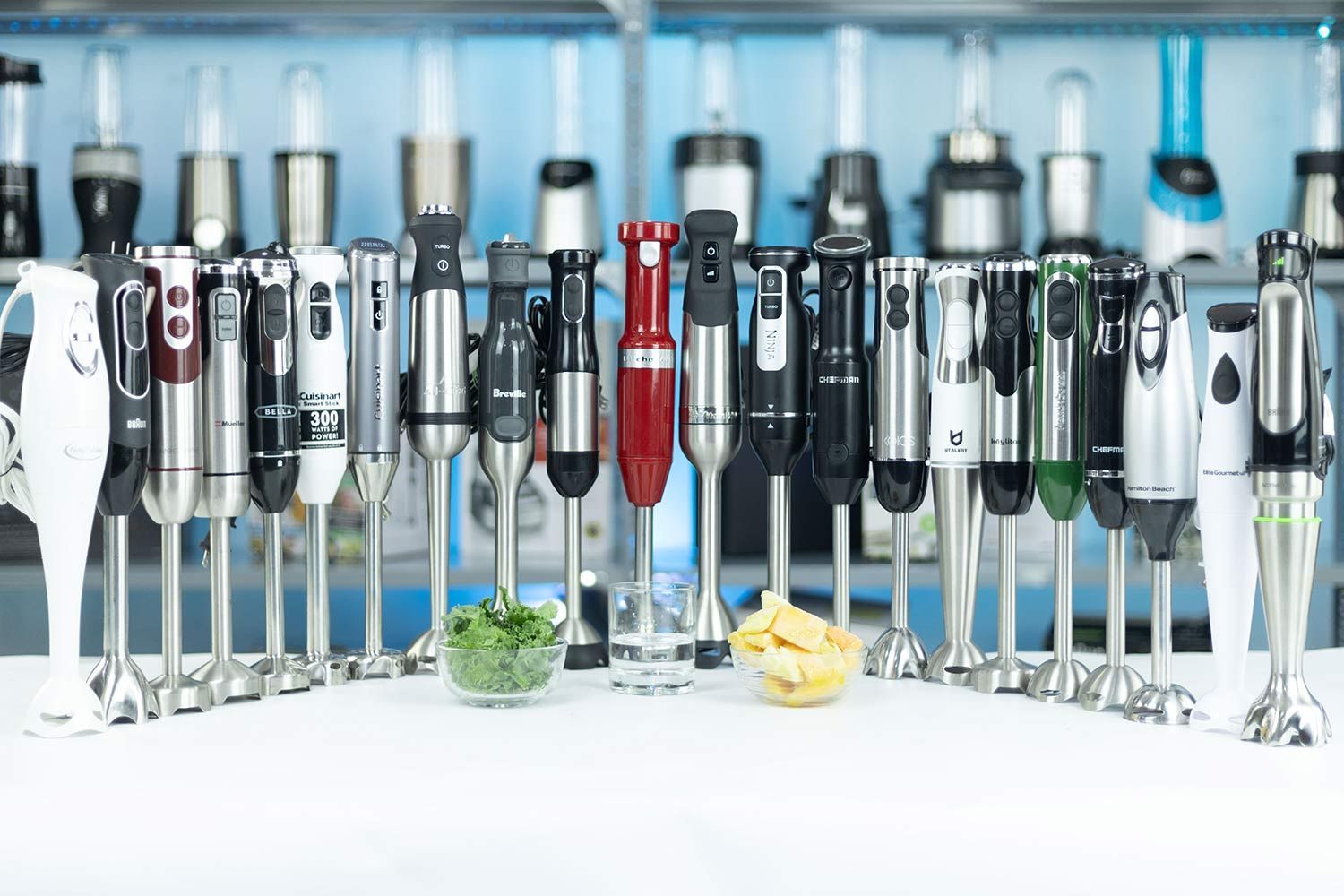Our recommendations are made independently. We may receive commissions from purchases made via our links.
Almond Milk Test for Immersion Blenders
With a good immersion blender, it’s easier than you might think to make your own nut milk at home. As such, we constructed this test and it should contribute to your buying decision.
This test is part of How Shouldit Tests Immersion Blenders v1.0
Non-dairy milk is nothing new for those with vegan diets or lactose intolerance. But with more and more people beginning to recognize its nutritional variety, this healthy drink is stepping into the mainstream for more Americans. And with a good immersion blender, it’s easier than you might think to make your own nut milk at home. As such, we constructed this test and it should contribute to your buying decision.
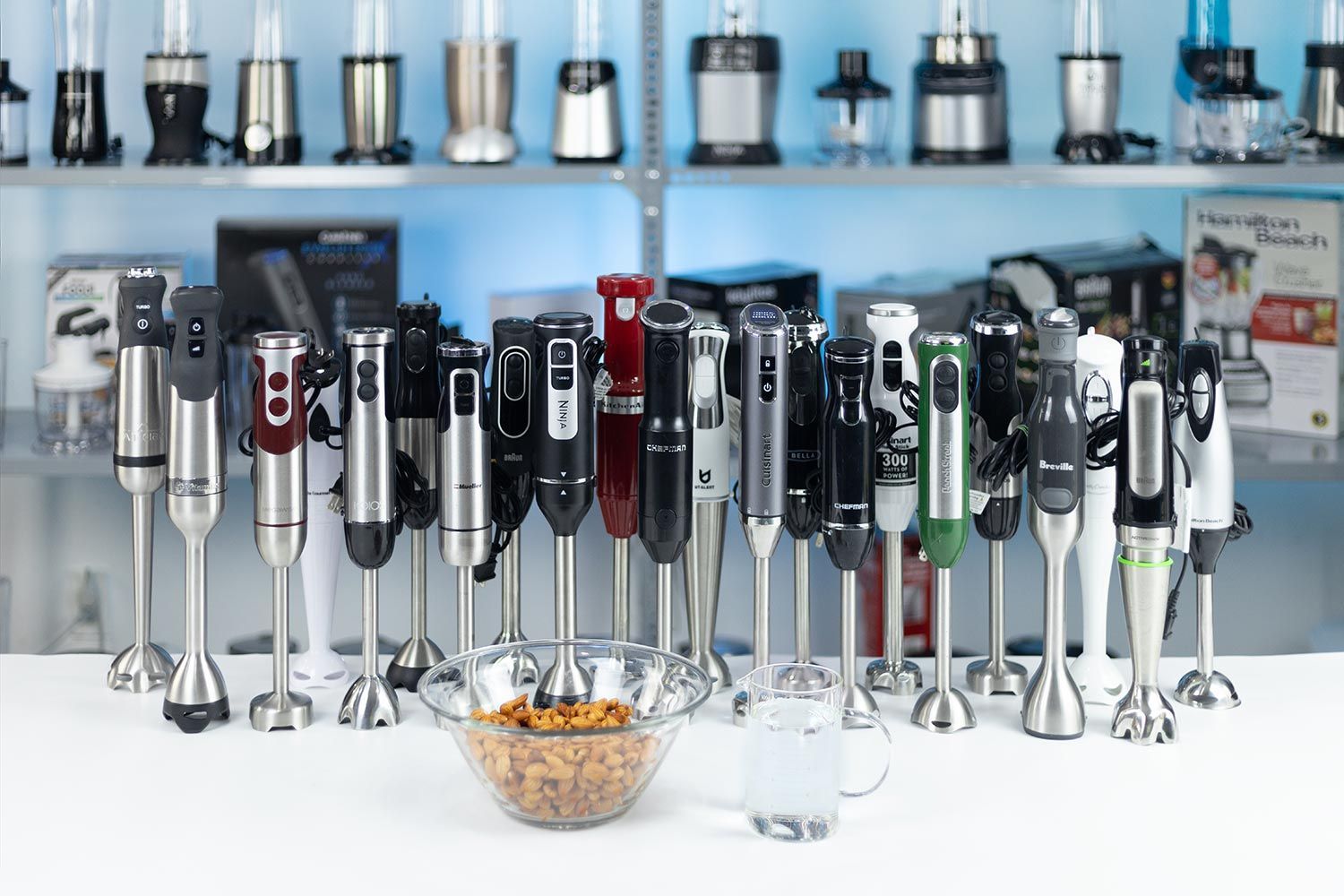
Why The Test Matters
During our research, we found an increasing number of people prefer immersion blenders over countertop blenders to make non-dairy milk at home due to their remarkable convenience. However, we knew very little about the differences between hand-held models in terms of efficiency, grinding time, and the resulting milk's flavor. As such, this test was designed with two specific objectives:
- It lets us clarify how well the blender works when it comes to preparing nut milk.
- The watery drinks gave us more visibility on the blender’s suction and vortex control, so we could conclude which item is likely to cause splattering, overflow, and cookware damage.
Testing Recipe: 1 Serving

- 1 cup raw almonds
- 3 cups filtered water
Testing Procedure
To yield one serving of dairy-free milk, we soaked raw almonds overnight in filtered water, then ground them in our 24-oz jar at the blender’s highest speed setting. During the operation, we stopped temporarily at the 30-second mark to check the progress. And once the blender churned out its best possible outcome, we strained the mixture through a soft cloth to remove the pulp. Any solids that didn’t pass through the strainer would be a measure of the blended result.
Scoring Scale
We rated each blender’s performance based on the two equally-weighted components: blending time and blended results. A score on a scale out of 10 is given for each component. These individual scores are then averaged and rounded to produce an overall score.
Blending Time Score

We measure how long each blender took to yield a serving of almond milk to calculate the blending time score. Here's our breakdown of how this score was determined:
Score Breakdown
- 45 seconds or less: We would award 10 points for any blender that passed its test within that time frame. Our nut milk was a simple combination, so a good immersion blender shouldn’t demand too much blending time. Furthermore, since the almonds had been soaked overnight, they might be very easy to grind or pulverize.
- 46-55 seconds: 9 points
- 56-65 seconds: 8 points
- 66-75 seconds: 7 points
- 76-85 seconds: 6 points
- 86-95 seconds: 5 points
- 96-105 seconds: 4 points
- 106- 115 seconds: 3 points
- 116-125 seconds: 2 points
Blended Result Score
We awarded the blended result scoPlate labeled Braun 5 containing almond particlesre for each blender from 0 to 10 based on the pulp’s fineness which is always fell into one of four variants:
- Very fine: 9.5-10 points
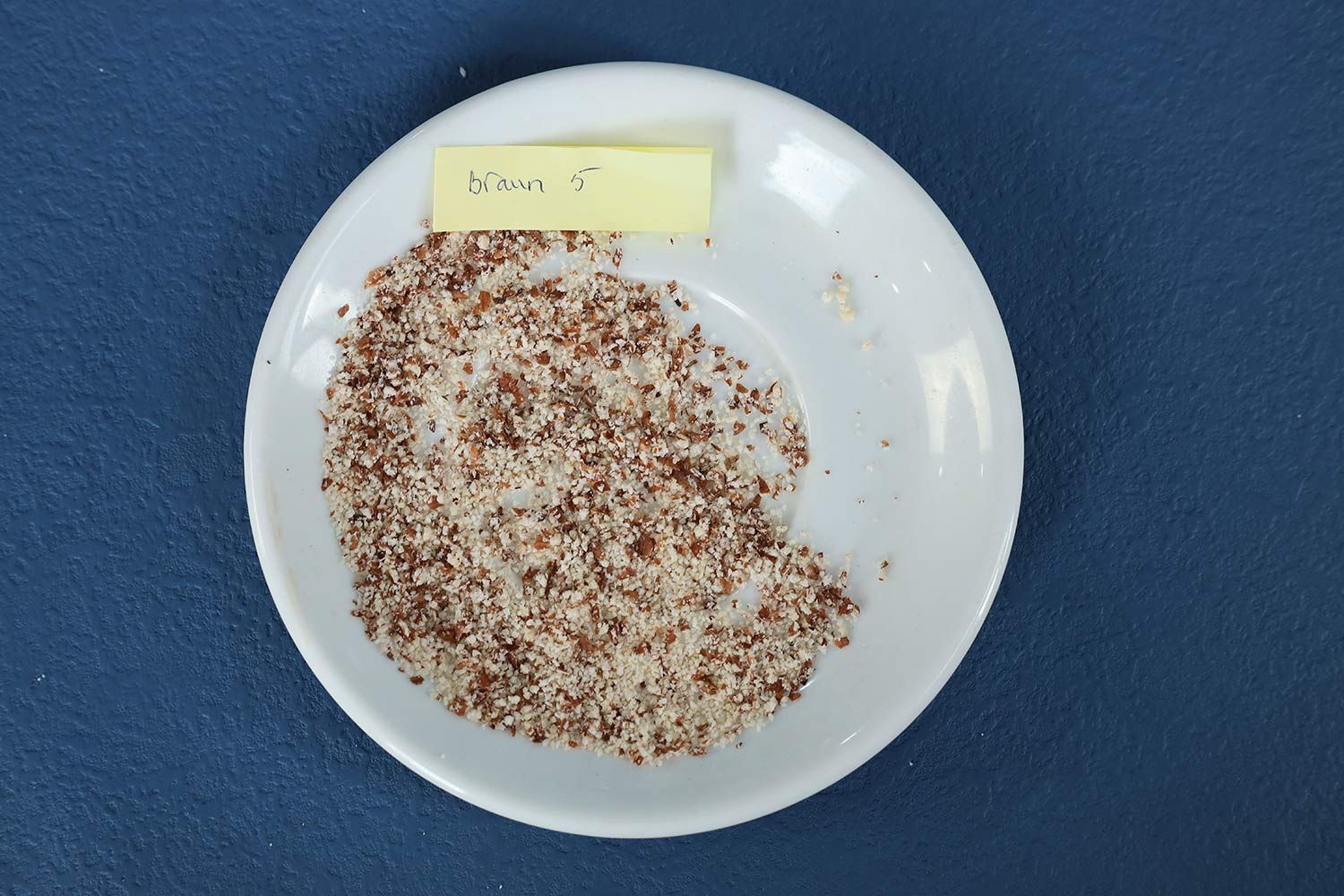
- Fine: 8 - 9 points

- Coarse: 6 - 7.5 points
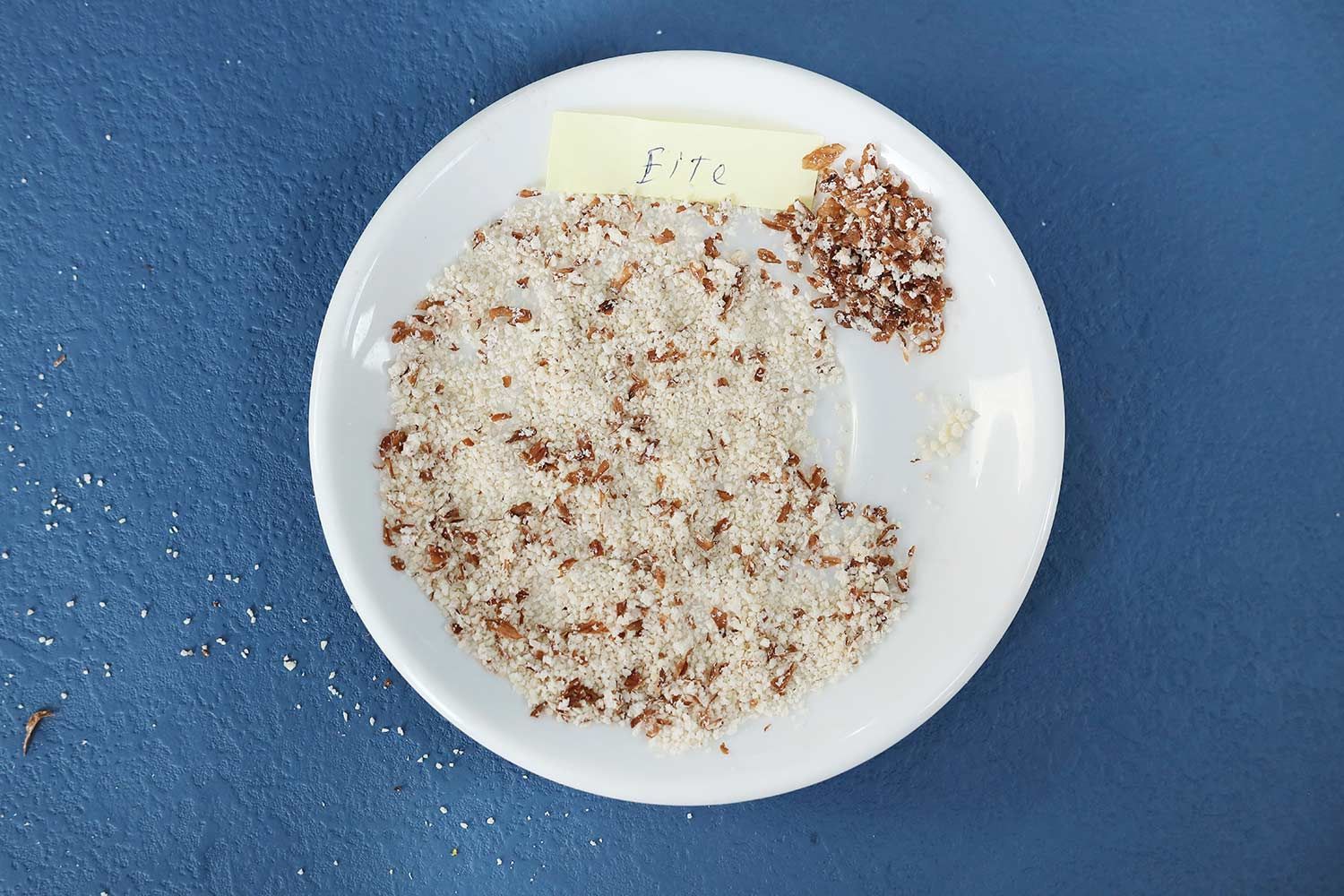
- Very coarse: 5.5 points or less
